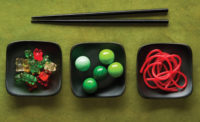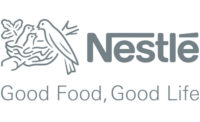With an industrial culture that favors private labeling as well as increasingly popular native fruits, Brazil is poised to keep expanding its influence in the confectionery industry.
Private labeling is becoming more and more common, both in Brazil's national market and international ones. Companies in Brazil have evolved in the last 10 years in an effort to meet the needs of companies that have to adhere to international industry standards, according to the Brazilian Association for Private Labeling and Outsourcing (ABMAPRO).
“Today, 70 percent of food suppliers in Brazil meet the global pre-requisites to export and offer private labeling,” says Neide Montesano, president, ABMAPRO.
In other words, Brazil is prepared to dive into private labeling on an international level. And specifically, in the confectionery industry, dozens of Brazilian companies have offered it for decades.
“We currently offer private labeling for hard candy, chewy candy, ball lollipops, flat lollipops, and the chocolate line Bib’s," says Tomaz Lain, export manager at Vonpar, a candy maker that has offered private labeling for 10 years. "All of the packaging material utilized is charged in advance to the client, who effectively receives a reimbursement of this packaging with each order they make.”
Mint manufacturer and exporter Docile also offers private labeling. It serves markets in Russia and South Africa and averaged 51 TEUs in exports in the past year.
But it's not just the industrial culture of Brazil that makes it a growing player in the confectionery industry.
The South American country also is home to two "superfruits" — fruits that contain important nutraceutical value. The acai berry and guarana — both native to Brazil — are rich in fatty acids and fiber. They also have antioxidant properties, as well as both proven and alleged health benefits that contribute to the deceleration or cure of some diseases.
The acai berry, known as "the fruit that cries" because it expels water, is a native species of the Amazon wetland. It’s popular among locals, who consume acai as a drink and as part of breakfast porridges, according to José Urano de Carvalho, agronomy engineer at Embrapa.
"Acai berry attracted the attention of the world for being a food rich in bioactive substances and elements, which act as antioxidants in the human body," he says.
Meanwhile, the guarana, which is also from the Amazon, is cultivated in the Brazilian state of Bahia. It was one of the first fruits to be domesticated by indigenous people and continues to flourish.
Both acai berries and guarana have been used in juice, jelly, salad, and tea. And in the confectionery industry, they are increasingly popular additions to chocolate and candy.
Peccin has created acai and guarana candy, while Nugali offers acai berry chocolate and Embaré has an acai-flavored caramel.
Ivan Blumenschein, export manager at Nugali, attributes the popularity of acai to its uniquely Brazilian flavor and appeal.
"Nugali chocolates, especially the Cacau em flor line, are made with zero flavorings, artificial colors or preservatives, and are made with high levels of Brazilian aroma cacao, in other words, the products are characterized by expressing a uniquely Brazilian flavor," he says. "We believe that by being a typically Brazilian fruit, the acai berry amplifies the Brazilian personality in the product."
And capitalizing on that unique personality will no doubt help Brazil to the forefront of the confectionery industry.





